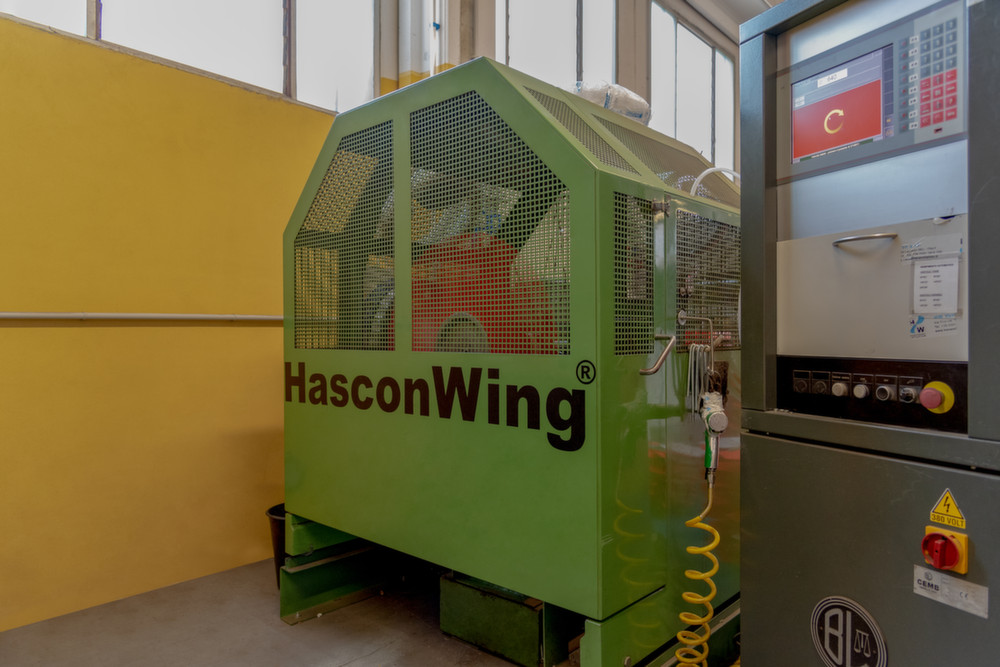


At HW Ventilation we care about the quality and safety of our fans.
We have always offered exclusively the dynamic balancing of our impellers, because we prefer to carry out a performance test and also a visual verification of the rotor, in conditions that are very similar to those of operation (unlike what happens with static balancing). Our horizontal balancer is able to balance axial impellers with diameters up to 2m (the Hasconwing range has a maximum diameter of 1.6m), with a weight up to 50 kg.
Although a fan and all its rotating components are designed and assembled to rotate around a hypothetical axis, without creating vibrations, in reality this does not happen. The physical construction and assembly of the various components inevitably lead to rotational eccentricities which are source of vibrations.
An unbalanced fan can have a virtually infinite number of imbalances, distributed along its axis of rotation.
The balancing on our wheel balancer is carried out according to ISO 1940-1 Mechanical vibration - Balance quality requirements for rotors in a constant (rigid) state - Part 1: Specification and verification of balance tolerances with balancing quality of grade G6.3.
Before performing the balancing, the fan is rotated on the spindle of our balancer at at least 800 rpm, thus simulating the behavior it would have in a real situation. At the end of the process, the operator displays on the screen in which area of the fan it is necessary to intervene to eliminate the imbalances. The balancing technique that we carry out in our workshop consists in applying weights on the fan in correspondence with the unbalance position highlighted by the balancer. This in order to compensate for the excessive weight on the opposite side.
The balancing of a fan is a very useful operation for: